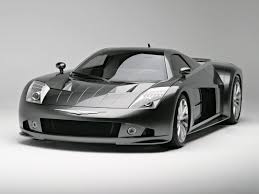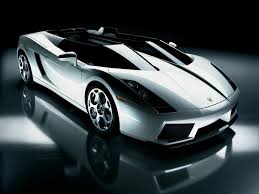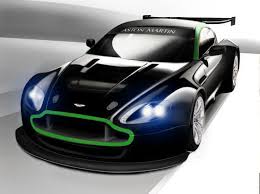 With the ocassion of the 41st Tokyo Motor Show, Lexus finally revealed the LFA Supercar… a new vehicle that promises to deliver a supreme driving experience.
With the ocassion of the 41st Tokyo Motor Show, Lexus finally revealed the LFA Supercar… a new vehicle that promises to deliver a supreme driving experience. According to the manufacturer the main idea of the LFA project was to keep the car’s weight to an absolute minimum and in order to achive this, Lexus switched from using aluminium for the car’s construction to advanced Carbon Fibre Reinforced Plastic (CFRP) for the chassis and bodywork. For those who don’t know, the CFRP is four times stronger than aluminium and offers an exceptionally stiff and strong structure delivering major weight advantages and saving around 100kg on an equivalent aluminium body. So, per total, Lexus used CFRP for 65 per cent of the body-in-white, with aluminium alloy used for the remaining 35 per cent.
Under the hood, we find a naturally aspirated 4,805cc capacity V19 engine capable to deliver 560 hp, 480 Nm of torque at 6,800rpm (90 per cent of which is available from 3,700rpm) and rev to a wailing 9,000rpm red line. With these numbers the sprint from 0 to 100 km/h (62 mph) is made in just 3.7 seconds while the maximum speed achieved is 325 km/h (202 mph). With a kerb weight of 1,480kg, the LFA has a power to weight ratio of 373bhp per tonne, while specific output of 115bhp per litre is among the highest of any current supercar.
The amazing V10 engine is managed through an equally advanced transmission, a purpose-designed six-speed Automated Sequential Gearbox (ASG) that drives the rear wheels via a limited slip differential. The ASG uses paddle shifts mounted on the steering column and an upshift can be effected in just 0.2 seconds. The system offers four driving modes: Auto, Sport, Normal and Wet, activated by a selector dial on the dashboard. Each mode offers a specific gearshift programme, and engine and brake control logic systems.
The LFA also offers one of the most advanced and powerful braking systems fitted to any production car: the brake discs are made of Carbon Ceramic Material (CCM). The front discs are 390mm in diameter and 34mm thick, gripped by six-piston aluminium callipers while the rear discs measure 306mm across, are 28mm thick and are fitted with four-pot callipers. Besides the braked, the car comes with the 20-inch forged aluminium BBS wheels wrapped in asymmetric Bridgestone tyres: 265/35ZR20 at the front and 305/20ZR20 at the rear.
Regarding the aerodynamics, Lexus says that the car provides a drag coefficient of 0.31. Airflow is precisely controlled over, under and around the car. Inside, we find a stylish cabin divided into three zones: the mechanical zone, which includes the skeleton of the car’s construction; the human zone, with two seats placed right at the centre of the car; and the driving zone, with high-tech instrumentation that brings driver and machine together. Trim details are finished in brushed metal and the floor-hinged brake and throttle pedals are made of forged aluminium.





0 comments:
Post a Comment